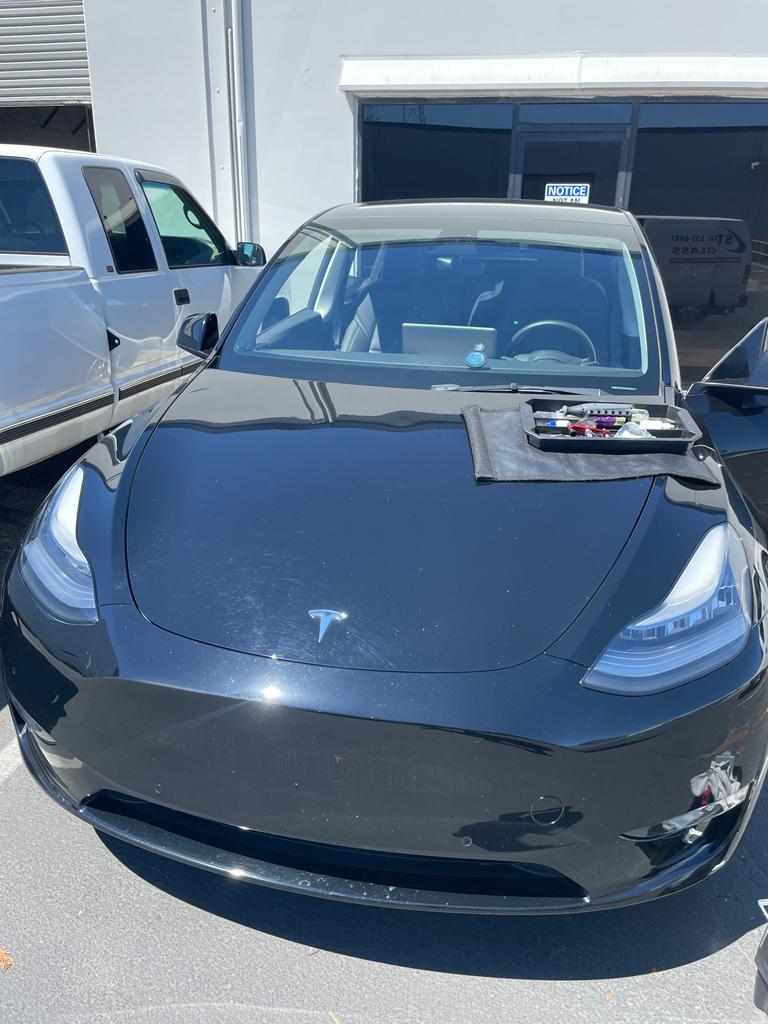
When replacing the windshield on a Tesla vehicle, it is imperative to recalibrate the Advanced Driver Assistance Systems (ADAS), specifically the camera system, for several critical reasons:
- Alignment Precision: The camera’s mounting must be precise. Even a slight misalignment can alter the camera’s angle or pitch, affecting its ability to accurately interpret the road ahead. This misalignment could lead to incorrect data processing, potentially compromising safety features like Autopilot.
- Environmental Control: Calibration is best performed in controlled lighting conditions. Direct sunlight can interfere with the camera’s sensors, leading to inaccurate calibration. A garage provides an ideal environment, shielded from sunlight, ensuring consistent and reliable results.
- Calibration Complexity: The recalibration process involves both static and dynamic phases:
- Static Calibration: This involves aligning the camera with specific targets to ensure the initial setup is correct. This step is highly sensitive and requires precision tools.
- Dynamic Calibration: Following the static setup, the vehicle must be driven to allow the system to learn and adapt to real-world conditions under motion. This phase ensures the camera’s software recognizes various driving scenarios accurately.
- Specialized Tools: Tesla provides specialized equipment designed for this calibration. These tools are essential for achieving the necessary precision in camera alignment, which standard automotive tools cannot replicate.
Given these factors, performing the recalibration in a controlled environment like a garage not only enhances the accuracy but also ensures the safety systems operate as designed, thereby safeguarding the vehicle’s occupants and other road users. This process, while intricate, is vital to maintain the integrity and functionality of Tesla’s advanced safety and autonomous driving features.
